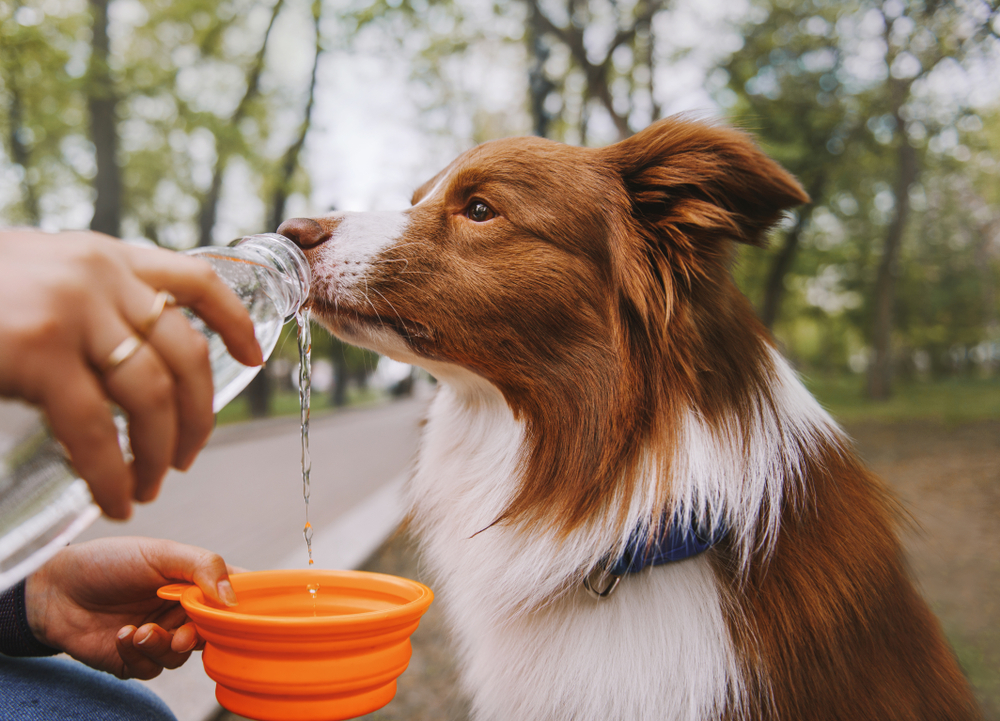6 Water Safety Tips Every Pet Owner Needs to Know

Your pet loves splashing around in water in every form, from puddles to the ocean. You enjoy watching your pet frolic as they thoroughly soak themselves, but you want to ensure they remain safe while they play. The team at Bayside Animal Hospital recommends a few water safety tips that will protect your pet from danger.
#1: Teach your pet to swim
Pets do not all naturally know how to swim, but you can teach them, if they are receptive to the idea. Swimming is a great, low impact exercise for your pet, and the skill will prevent them from drowning. Follow these steps:
- Find a quiet, easily accessible water source.
- Keep your pet leashed during their swimming lesson.
- Start in a shallow area.
- Do not force your pet to participate.
- Gradually move your pet into deeper water.
- When they start to paddle with their front legs, gently support their abdomen until they begin paddling with all four limbs.
- The first swimming session should be brief to ensure your pet does not get too tired.
#2: Do not allow your pet to contact harmful algae blooms
Harmful algae blooms (HABs) are blooms that produce harmful toxins. Never allow your pet to drink or swim in water that smells bad, has an odd color, or appears to have surface slime or foam. Common HABs include:
- Blue-green algae — This is a type of bacteria called cyanobacteria found in freshwater lakes, streams, ponds, and brackish water during the summer months. The blooms produce cyanotoxins that affect the brain, liver, and skin. Signs your pet may exhibit if they come in contact with blue-green algae include vomiting, bloody or black diarrhea, lethargy, difficulty breathing, muscle twitches, or paralysis.
- Red tide — A bloom of phytoplankton, red tide is found in salt water between early spring and late summer. The majority of red tides in California do not produce deadly toxins, but the only confirmation is to test the bloom, so you should always assume a red tide is toxic. If your pet swims in contaminated water, they can suffer irritation of the eyes, nose, and throat. If they ingest contaminated seafood, they can suffer vomiting, diarrhea, seizures, and paralysis.
If your pet comes in contact with an HAB, rinse them thoroughly with clean water and take them to the veterinary hospital immediately.
#3: Do not let your pet drink salt water
When your pet drinks salt water, the salt in their intestines draws water from their blood. Only a few mouthfuls of ingested salt water can cause mild diarrhea. However, if your thirsty pet drinks a large amount, they can become severely dehydrated and the sodium levels can become toxic, causing brain cell death and kidney failure. Signs include diarrhea, lethargy, and seizures. Dogs with toxic sodium levels have a mortality rate higher than 50%, regardless of treatment. If you see your pet drink salt water, stop them immediately, and watch them closely for any signs. If you know your pet has ingested a significant amount of salt water, or they are exhibiting signs, take them to the veterinary hospital immediately.
#4: Keep your pet safe around pools
Pools are a great place to cool off on a hot day, and following a few guidelines will help keep your pet safe.
- Never leave your pet alone around the pool.
- Train your pet to wait for you at the pool’s edge.
- Train your pet how to use the stairs to exit the pool.
- Keep pool chemicals stored safely.
- Install a floating pool alarm that will alert you if the pool water is disturbed.
- Learn pet CPR.
#5: Practice good pet hygiene after a swim
Rinse your pet thoroughly with clean, fresh water after swimming in fresh water, salt water, or chlorinated water. If their coat still smells strongly, bathe them with an appropriate shampoo. Clean your pet’s ears thoroughly, removing all moisture, to prevent painful ear infections.
#6: Bring water and a water bowl for you pet whenever you go near water
Provide your pet clean, fresh water every 15 minutes to decrease their intake from other sources. Saltwater toxicity is a serious concern, but your pet can be adversely affected by drinking from other sources, as well. If your pet drinks too much chlorinated water, their gastrointestinal tract can become irritated, resulting in vomiting and diarrhea. Your pet also is at risk for becoming infected with waterborne illnesses, such as leptospirosis and giardiasis, if they drink from freshwater sources. If you cannot keep your pet from diving into a natural source, steer them toward clear, flowing water, which is less likely to contain pathogens.
Following these water safety tips will ensure your water-loving pet is safe while splashing around in the wet stuff. However, if your pet is harmed while enjoying waterfront fun, do not hesitate to contact the team at Bayside Animal Hospital.


